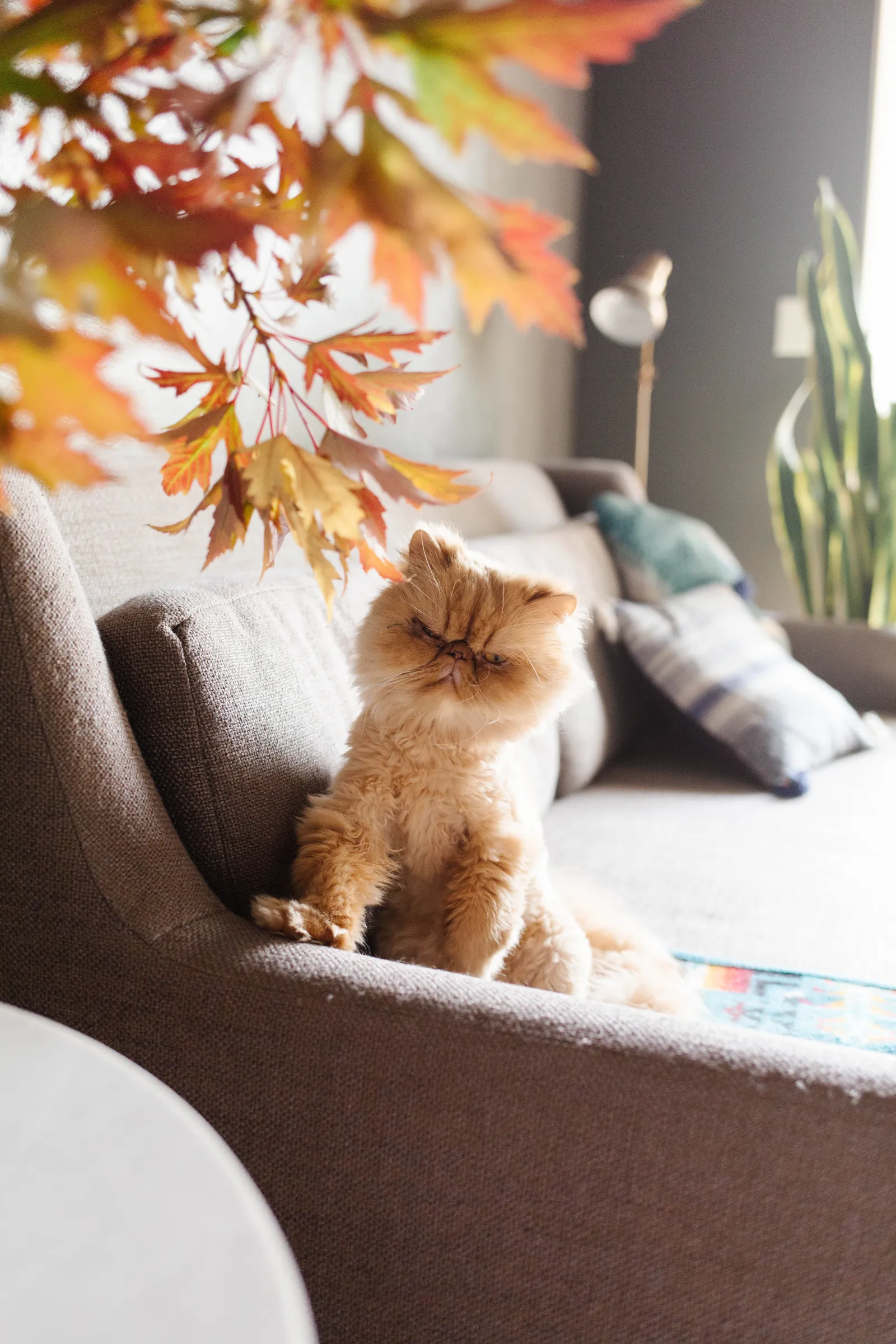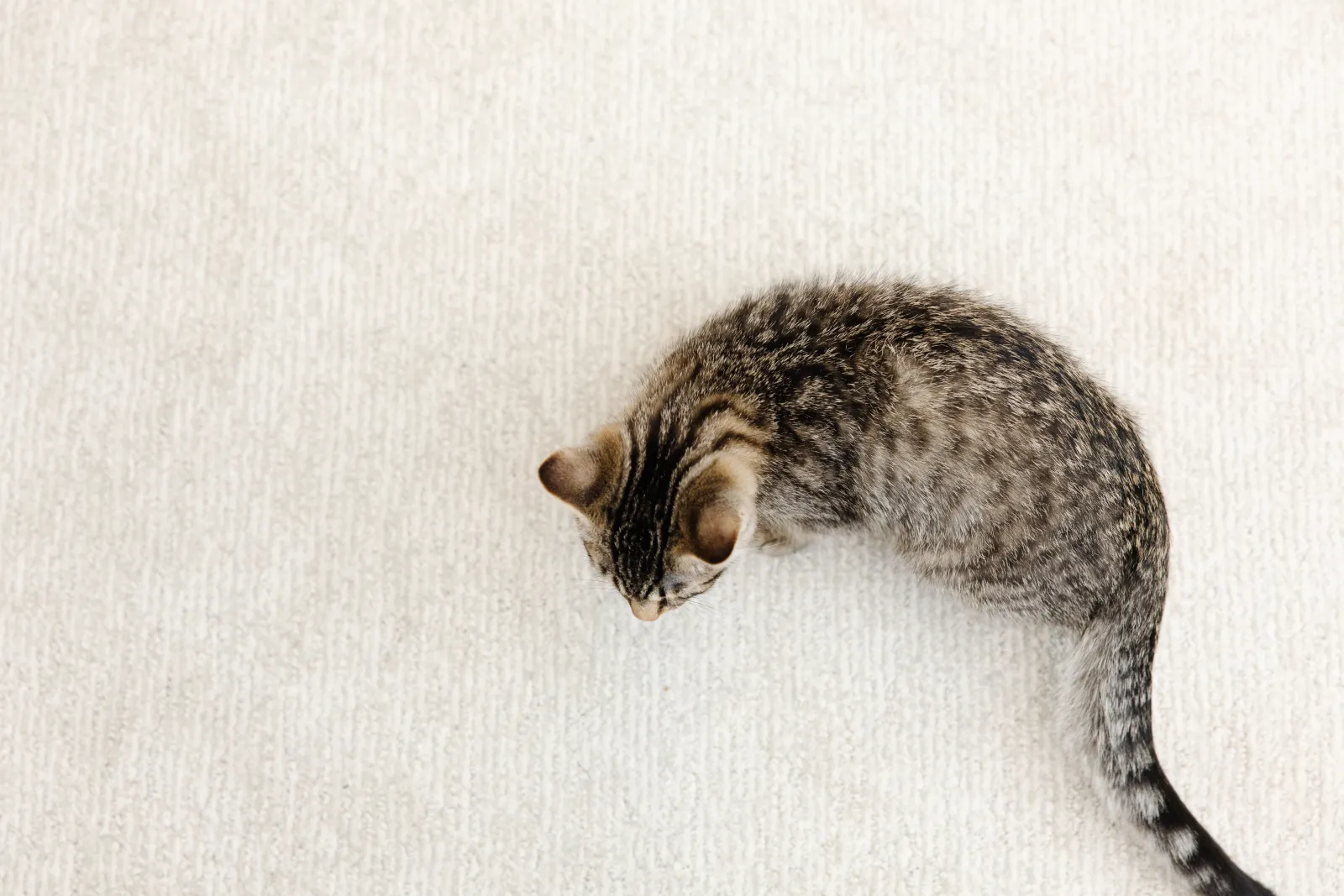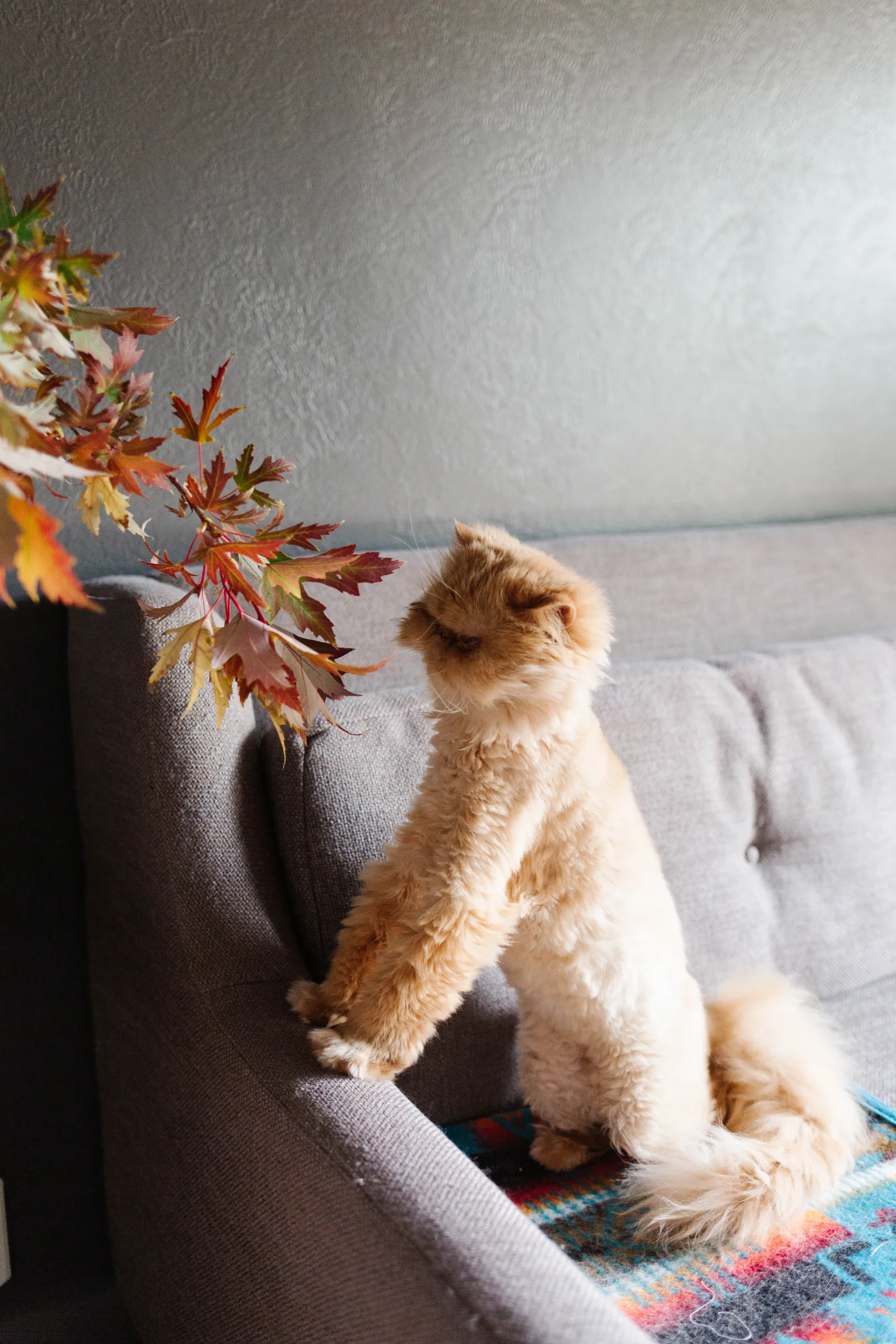How to Protect Your Carpet From Cats
Our furry feline friends are adorable but can adopt behaviors that cost us an arm and a leg, such as scratching carpets. Cats scratch carpets for various reasons, including seeking attention, separation anxiety, working out, feeling insecure, skin problems, marking territory, feeling uncomfortable, and wanting more room to explore.
Some of the most effective and vet-proven methods to prevent your cat from scratching the carpet are:
Protecting the carpet by, for example, installing carpet protectors for cats
Dulling your cat's claws
Redirecting the behavior
Applying scents that deter cats from the carpet
Cleaning the carpet correctly/professionally
Keep reading because I'll also tell you the best cat scratch carpet protectors to buy.

How to Protect Carpet From Cats: Vet-Proven Methods!
There are various effective and vet-proven ways to protect your carpet from cat scratches:
Option 1: Protect The Carpet
To stop the cat from damaging the carpet, install scratch protectors or runners, cover scratch spots, change the carpet type, or remove the carpet.
Install Carpet Protector For Cats
Most cat scratch carpet protectors are residue-free, transparent, and available in various sizes. Emmy's Best Pet Stop the Scratch Furniture Protector Tape is an example of a great carpet protector for cats.
The company claims it's non-toxic, residue-free, and strong, so your cat won't be able to damage it. It has various transparent sheets that you can use on various surfaces. Based on where the cat loves scratching, you can install carpet protectors for doors, stairs, corners, or doorways.
If there's a strong bond between you and your cat, it will stay around the door as it waits for you. When separation stress kicks in, it will start scratching your carpet. A cat carpet protector for doorways would save you a lot of headaches and money. A transparent cat carpet door protector is ideal; it doesn't cover the beauty of your carpet.
Carpet Runners
Install carpet runners in spots your cats love to scratch. Runners made of plastic or vinyl and featuring ridges on the bottom are great; they won't slide due to high traffic and will protect your carpet from cat scratches.
Your cat may want to scratch the plastic runners, but that's cheaper than replacing an entire carpet.
Cover Scratch Spots
Use furniture, a rug, or sheets of tin foil to cover all the spots your cats love to scratch. Covering the spots for about three weeks or a month makes the cats forget about that area and look for other areas to scratch.
Covering also helps their scent fade; hence, they won't ruin it after uncovering.
Change The Carpet Type
Cats hate scratching carpets made of wool and nylon fiber. Wool may be expensive, but it's cat-claw resistant. A cheaper alternative is a nylon fiber carpet or others with a tight weave, as cats don't like scratching them.
Remove The Carpet
Let this be your last resort, especially if it's cold, your carpet is glued, or you can afford other better alternatives!
If your carpet is expensive or new or other protective measures, such as installing carpet corner protectors for cats, have failed, remove it.
Option 2: Dull Your Cat's Claws
Dull your cat's claws using vinyl claw covers or trimmers.
Trimming
Avoid declawing your cat's claws—it's inhuman, and vets don't recommend it! Declawing cats' claws involves amputating their third phalanx, which would be compared to cutting your fingers, each at the last joint. Instead, trim their claws.
Trimming the cats' claws stops further damage to the carpets. Use the right trimmers to avoid splintering your cats' claws.
Outdoor cats' claws don't need regular trimming; their nails wear down naturally due to rough surfaces. Kittens, seniors, and indoor cats may need regular trimming because their claws aren't exposed to rough floors.
Some cats don't like claw-trimming sessions; go slow on them, give them breaks, and offer some treats to encourage them to stay calm.
Temporary Synthetic Nail Caps/Covers
Buy temporary synthetic nail caps/covers for your cats. Some are non-toxic and don't hurt cats. Glue them over your cats' nails and reapply the glue every 4 to 6 weeks to keep them in place.
The synthetic nail caps will not damage your carpets regardless of how long the cat scratches them.
Your cat might feel uncomfortable wearing nail caps/covers for the first time. This could cause stress, resulting in behavioral issues such as biting and yowling or health complications such as urinary obstructions.
Closely supervise your cat after it starts using the nail caps. If possible, spend time with it to make it feel comfortable and safe. After a day or two, the cat will feel comfortable, with no health complications or stress associated with the new lifestyle.
Contact your vet for advice on whether to use nail caps, especially if your cat has an underlying health condition.

Option 3: Redirect The Behavior
To successfully redirect your cats' carpet scratching behavior, eliminate stressors, encourage positive behavior, keep the cat busy, use synthetic facial pheromone diffusers/sprays, install synthetic scratching attractors, and/or replace/install the scratching posts.
Eliminate Stressors
Scratching in cats is a natural and crucial behavior that you only need to worry about if it becomes excessive. It is a way of telling you that something is not okay with your feline furry friend. Stress and anxiety are major triggers of cats' excessive carpet scratching.
Lack of (enough) food or milk, a lack of social interactions, an inability to access the litter box, separation anxiety, and conflict with other pets cause stress in cats, resulting in excessive scratching. Other stressors include the presence of a new baby or stranger in the house, inconsistency in their daily routine, health problems, and loud noises.
Deal with your cats' stress triggers and create a conducive environment for them daily. Visit the vet often for health check-ups.
Encourage Positive Behavior
Give your cat treats whenever she behaves accordingly to reinforce the behavior, for example, when it stops scratching the carpet or scratches the posts instead of your carpets.
Calmly and constantly redirect her to the scratching posts when it scratches the carpet. Cats are quick learners and great at following instructions, so it won't take long before your cat behaves accordingly.
Keep The Cat Busy
Buy interactive toys for your cats to keep them entertained even in your absence. These toys eliminate boredom, which triggers carpet scratching. If you have toddlers, encourage them to play with your cat; they'll bond as they distract the cat from scratching.
Use Synthetic Facial Pheromone Diffusers/Sprays
Apply synthetic facial pheromone diffusers/sprays, such as Feliway®, to the areas your cat loves to scratch. Feliway® is a great product for cats that scratch due to anxiety or stress.
Thoroughly clean the carpet before applying synthetic facial pheromone diffusers or spray to get rid of 'territory messages' cat paws create on the carpet (and other objects they scratch on).
Once clean and dry, use the Feliway® Optimum diffuser or spray; it calms most cats and eliminates the need to scratch due to stress.
Each cat is unique, so test the product to see if it works on your cat. Contact your vet before using synthetic facial pheromone diffusers/sprays to ensure they'll be safe for your cats.
Install/Replace Scratching Posts
If your cat loves scratching staircase carpets, it's probably stretching itself (exercising), especially if it has just woken up. Buy a stair carpet protector for cats or install scratching posts.
If you have scratching posts, replace them if your cat no longer uses them or if they are too worn out for the cat to scratch. Install vertical and horizontal scratcher posts so your cats can choose their favorite. Most prefer horizontal posts. Use varying materials for your posts, such as cardboard, sisal, and carpet.
Remember to follow the scratching posts golden rules:
Must be sturdy, not wobbling when in use
There must be a scratching post for each cat
Place scratching posts near the area where cats love to scratch or sleep
Posts should be at least 90 cm tall to allow the cat to stretch fully when scratching
Install Synthetic Scratching Attractors
After scratching the carpet, cats' paws leave visual (lacerations) and chemical messages. These 'massages' are a feline pheromone called Feline Interdigital Semiochemical (FIS). If your cat loves to scratch the same place repeatedly, use Feliscratch.
Buy a copy of Feliscratch by Feliway® and apply it to the areas your cat loves to scratch. This will mimic the visual and chemical signals, encouraging your cat to scratch without damaging your carpet.
Scratching can also be a sign of stress in cats. Feliscratch by Feliway®, helps your cats to feel calm. Apply it (2 to 3 lines) on the surfaces you want your cat to scratch. The product mimics the visual and chemical messages the cat's paws leave behind, encouraging it to scratch there instead of damaging the carpet.
After applying the product, allow five minutes to dry.
Tack A New Carpet Over The Area
Look for a small carpet of the exact color and material and tack it (using carpet tacks) over the surface where the cat scratches often.
When moving out, remove the piece of carpet, and the underlay carpet will be in perfect condition.
Option 4: Apply Scents That Deter Cats From The Carpet
Cats detest white vinegar, rosemary, lavender, peppermint, orange, and citronella fragrances. If you apply these scents on the areas cats love to scratch, they'll keep off those zones completely. Apply these same scents to stop your cat from peeing on the carpet.
Option 5: Clean The Carpet Correctly/Professionally
Cats mark their territory when scratching by leaving their scents on the carpet. This scent, undetectable to us, is highly detectable by the cats. Hence, thoroughly clean your carpet.
In addition to regular vacuum cleaning, hire Zerorez® to deep clean your carpets. We shall help get rid of the cat paw-scent-related scratching. There's more: professional carpet cleaning removes cat pee odor from carpets, too. We also offer pet odor treatment and house cleaning services on request.
We're Platinum Rated by the Carpet and Rug Institute (CRI). The CRI testing and rating confirm that Zerorez's deep carpet cleaning system:
Doesn't damage the carpet pile
Removes the highest level of soil and moisture
Contact us at 866-937-6739 or schedule carpet cleaning services.
